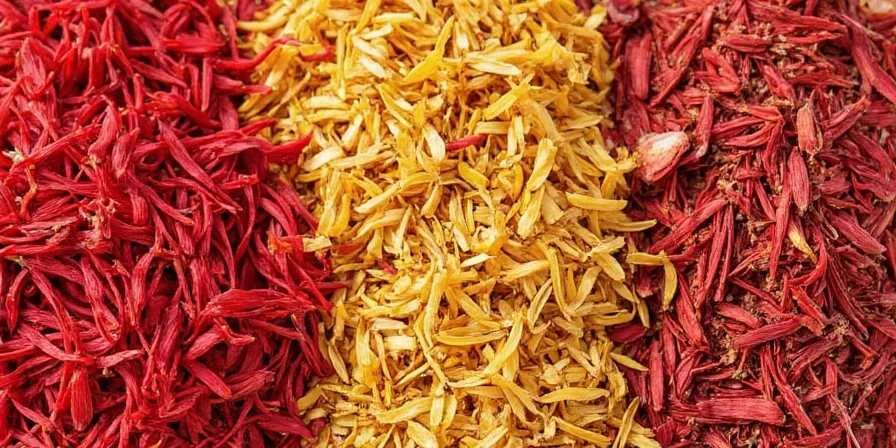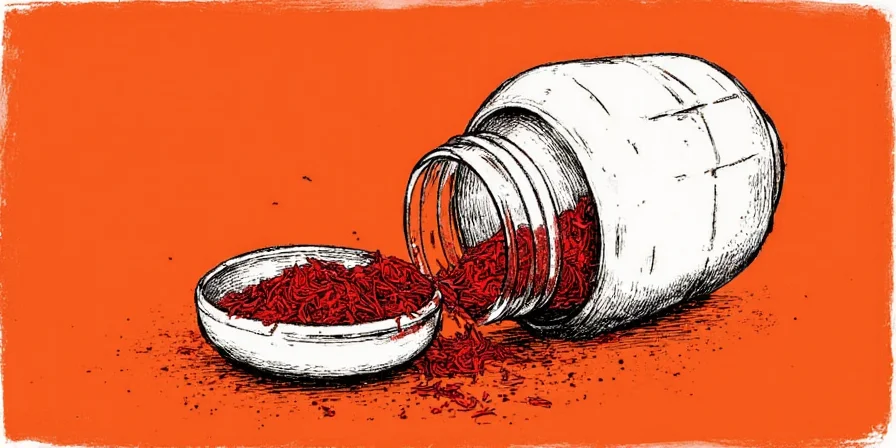The Golden Secret: Saffron Storage & Usage Hacks for Culinary Enthusiasts

Ever found yourself staring at a tiny bundle of golden threads, wondering just how to make them work their magic in your kitchen? Saffron, the world’s most expensive spice by weight, is a culinary gem that can transform any dish from ordinary to extraordinary. But, like any precious treasure, it requires careful handling and storage to preserve its flavor and color. In this blog, we’ll dive deep into the world of saffron—its uses, storage hacks, and tips to get the most out of every single thread. Whether you're a professional chef or a curious home cook, this guide is your golden ticket to saffron mastery.
What is Saffron and Why is it So Special?
Saffron is derived from the delicate crocus sativus flower, specifically from the stigmas of its blossoms. Each flower produces only three stigmas, and it takes about 75,000 of these tiny threads to make just one pound of saffron. This labor-intensive process is why saffron is so expensive and highly valued in cuisines around the world.
Used in dishes ranging from Spanish paella to Italian risotto and Persian tahdig, saffron is not just about flavor—it adds a distinct golden hue and a subtle floral aroma that can elevate any dish. But to get the most out of this precious spice, you need to know how to store and use it properly.
Key Uses of Saffron in Global Cuisines
- Paella (Spain): Saffron is the soul of this iconic rice dish, giving it its signature color and flavor.
- Risotto (Italy): Adds a rich, nutty aroma and golden color to this creamy rice dish.
- Tahdig (Persia): Used in the bottom layer of the dish, where it imparts a deep, earthy flavor.
- Spanish Omelets: A pinch of saffron can transform a simple omelet into a gourmet experience.
- Indian Dishes: Used in biryanis, kormas, and desserts like saffron rice pudding.
Saffron Storage: The Key to Longevity
Proper storage is crucial for preserving the potency and aroma of saffron. If stored improperly, it can lose up to 50% of its flavor within a few months. Here are some essential storage hacks to keep your saffron in top condition:
1. Keep it in a Cool, Dark Place
Saffron is sensitive to light, heat, and moisture. The best place to store it is in an airtight container in a cool, dark place—like a pantry or a cupboard away from the stove or oven. Avoid storing it in the refrigerator, as moisture can cause it to clump and lose its potency.
2. Use an Airtight Container
Always store saffron in an airtight container to protect it from moisture and air exposure. Glass jars with tight-fitting lids are ideal. Avoid using plastic containers, as they can absorb odors and affect the flavor of the saffron.
3. Keep it Dry
Moisture is the enemy of saffron. If the saffron threads become damp, they can clump together and lose their potency. To ensure they stay dry, store them in a container that is completely sealed and free from any moisture.
4. Avoid Strong Odors
Saffron is highly absorbent and can pick up strong odors from nearby spices or foods. Store it separately from other spices and away from strong-smelling ingredients like garlic, onions, or pepper.
5. Use It Within a Year
Even with the best storage conditions, saffron will gradually lose its potency over time. For the best flavor and aroma, use it within one year of purchase. If you’re not planning to use it immediately, buy it in small quantities and store it in the freezer for longer shelf life.
Maximizing Flavor: Saffron Usage Hacks
Now that you know how to store saffron, let’s talk about how to use it effectively. Saffron is a delicate spice that requires careful handling to unlock its full potential. Here are some expert tips to help you get the most out of every thread:
1. Soak It in Warm Water or Broth
One of the best ways to release the flavor of saffron is to soak it in warm water or broth before adding it to your dish. This process helps the saffron threads to expand and release their color and aroma more effectively. Soak for about 15–20 minutes before adding to the recipe.
2. Use the Right Amount
Saffron is potent, so a little goes a long way. A general rule of thumb is to use about 10–15 threads per serving or per 1–2 cups of liquid. However, the exact amount depends on the recipe and your personal taste. Start with a small amount and adjust as needed.
3. Add It Early in the Cooking Process
Because saffron is a delicate spice, it’s best to add it early in the cooking process to allow its flavor to infuse into the dish. In paella or risotto, for example, it’s often added to the broth or rice at the beginning of cooking.
4. Don’t Overheat It
High heat can destroy the delicate flavor and color of saffron. Avoid adding it to a boiling pot of liquid or sautéing it at high temperatures. Instead, add it to warm or room-temperature liquids to preserve its potency.
5. Use It in Both Sweet and Savory Dishes
Saffron is not just for savory dishes—it can also be used in sweet treats like cakes, pastries, and desserts. Its floral aroma and golden color make it a perfect addition to saffron rice pudding, saffron-infused cakes, and even cocktails.
Saffron vs. Other Spices: A Flavor and Use Comparison
While saffron is unique in many ways, it’s often compared to other spices like turmeric, paprika, and cardamom. Here’s a quick comparison to help you understand how saffron stands out:
| Spice | Flavor Profile | Color | Use in Cooking | Storage Tips |
|---|---|---|---|---|
| Saffron | Floral, slightly sweet, and nutty | Golden-yellow | Savory and sweet dishes | Store in airtight container, cool and dark |
| Turmeric | Earthy and slightly peppery | Yellow-orange | Savory dishes, curries, and marinades | Store in a cool, dry place |
| Paprika | Smoky and slightly sweet | Red or orange | Savory dishes, stews, and rubs | Store in airtight container away from heat |
| Cardamom | Spicy and aromatic | White or green | Savory and sweet dishes | Store in airtight container, cool and dry |
Common Mistakes to Avoid When Using Saffron
Even the most experienced cooks can make mistakes when working with saffron. Here are some common pitfalls to avoid:
- Using Too Much: Saffron is potent, so using too much can overpower the dish. Always start with a small amount and adjust as needed.
- Adding It Too Late: If you add saffron too late in the cooking process, it may not have enough time to infuse into the dish. Add it early to allow the flavor to develop.
- Using It in High Heat: High heat can destroy the delicate flavor of saffron. Avoid sautéing it at high temperatures or adding it to a boiling pot.
- Not Soaking It: Skipping the soaking step can result in a less vibrant flavor and color. Always soak saffron in warm water or broth before adding it to the dish.
- Storing It Improperly: Improper storage can cause saffron to lose its potency and aroma. Always store it in an airtight container, away from heat, light, and moisture.
Conclusion: Embrace the Golden Magic of Saffron
Saffron is more than just a spice—it’s a symbol of luxury, flavor, and tradition in many cultures around the world. With the right storage and usage techniques, you can unlock its full potential and create dishes that are both visually stunning and incredibly flavorful. Whether you're making a classic paella, a creamy risotto, or a sweet dessert, saffron has the power to elevate your cooking to new heights.
So next time you open that tiny bundle of golden threads, remember: you're not just working with a spice—you're unlocking the magic of one of the world’s most precious ingredients. Happy cooking!

With these tips and tricks, you're now equipped to master the art of saffron storage and usage. Whether you're a professional chef or a home cook, the golden secret is yours to uncover—just take it one thread at a time.










 浙公网安备
33010002000092号
浙公网安备
33010002000092号 浙B2-20120091-4
浙B2-20120091-4